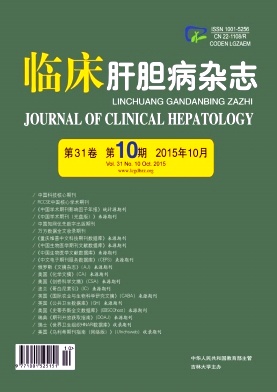Objective To investigate the factors influencing the liver histological features in chronic hepatitis B virus( HBV) infection patients with low alanine transaminase( ALT) levels by analyzing the relationship of serum hepatitis B surface antigen( HBs Ag) level with liver inflammation grade and fibrosis stage. Methods A total of 511 HBV infection patients admitted to our hospital from December 2010 to December 2013 were studied. The liver histological features,serum HBs Ag level,and HBV DNA copy number were examined. Comparison of categorical data between different groups was made by chi- square test,comparison of continuous data following the normal distribution was made by t test,and comparison of continuous data not following the normal distribution was made by Kruskal- Wallis H test. The relationship of serum HBs Ag level with liver inflammation grade and fibrosis stage was determined by Spearman's rank correlation analysis. Results All patients showed different degrees of hepatic histological abnormalities. The group aged more than or equal to 40 years had significantly lower HBe Ag positive rate,HBs Ag level,and HBV DNA copy number compared with the group aged less than 40 years( χ2= 86. 8,P <0. 000 1; t = 2. 99,P = 0. 003; t = 7. 25,P < 0. 000 1). The groups with different ages had significant differences in liver inflammation grade and fibrosis stage( χ2= 70. 03,P < 0. 000 1; χ2= 61. 92,P < 0. 000 1). The Spearman's rank correlation analysis indicated that in both HBe Ag- positive and- negative patients HBs Ag level was negatively correlated with liver inflammation grade( r =- 0. 245,P < 0. 000 1;r =- 1. 51,P = 0. 019) and fibrosis stage( r =- 0. 153,P = 0. 012; r =- 0. 181,P = 0. 005). Conclusion Age is one of the important factors influencing the liver histological progression in chronic HBV infection patients with low ALT levels. HBs Ag level is negatively correlated with liver inflammation grade and fibrosis stage in chronic HBV infection patients with low ALT levels,so it could be used as an important non- invasive indicator for the liver histological status in these patients.













 DownLoad:
DownLoad: